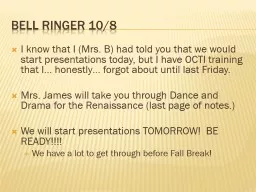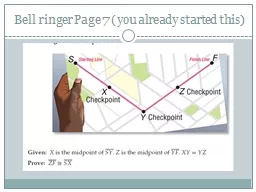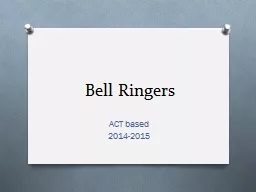PPT-Bell Ringer 10/8
Author : test | Published Date : 2015-11-08
I know that I M rs B had told you that we would start presentations today but I have OCTI training that I honestly forgot about until last Friday Mrs James will
Presentation Embed Code
Download Presentation
Download Presentation The PPT/PDF document "Bell Ringer 10/8" is the property of its rightful owner. Permission is granted to download and print the materials on this website for personal, non-commercial use only, and to display it on your personal computer provided you do not modify the materials and that you retain all copyright notices contained in the materials. By downloading content from our website, you accept the terms of this agreement.
Bell Ringer 10/8: Transcript
Download Rules Of Document
"Bell Ringer 10/8"The content belongs to its owner. You may download and print it for personal use, without modification, and keep all copyright notices. By downloading, you agree to these terms.
Related Documents














